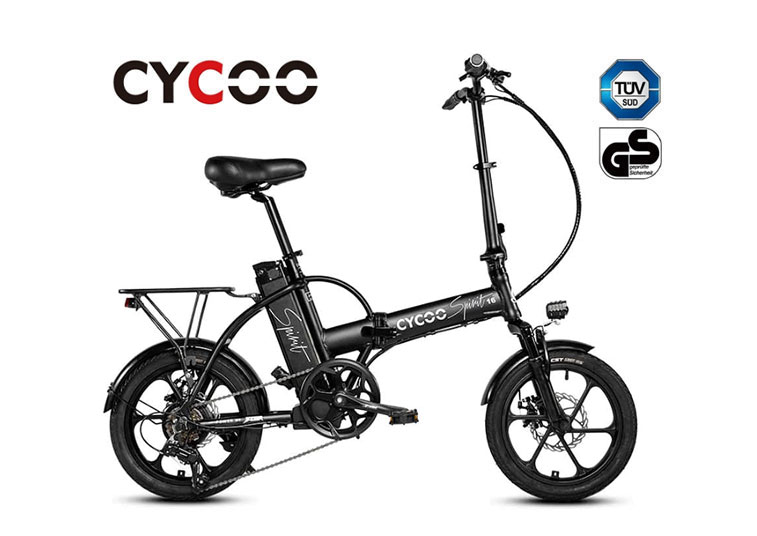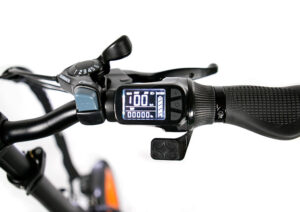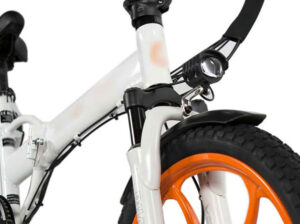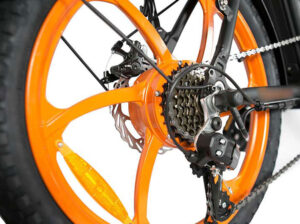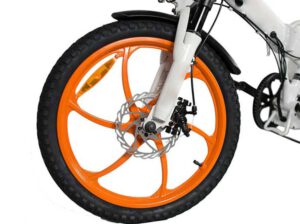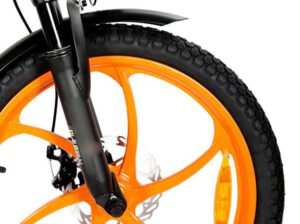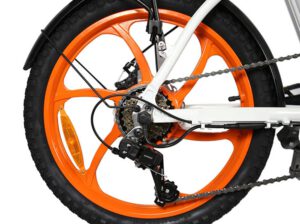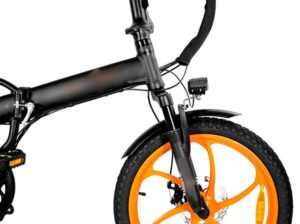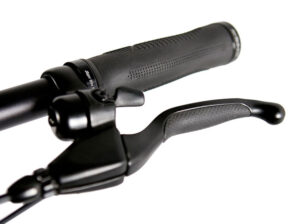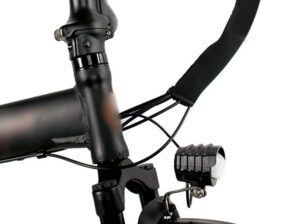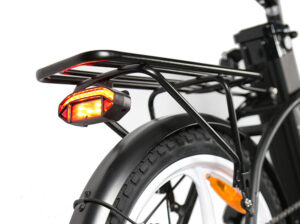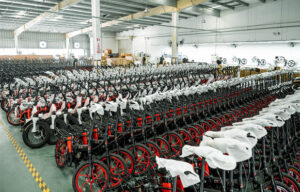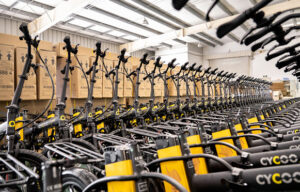CYCOO bike
An electric bike is an excellent choice for those who want to commute to work on a bike but cannot due to distance or hills. It is an excellent alternative to cars and buses, especially in cities where traffic jams are common. It is also a good choice for those who want to exercise but don’t have time or energy every day.
CYCOO Spirit 16 inch Folding electric bike specifications
Shock Fork: M-25, 16″MOZO, Front suspension fork
Saddle: Justice
Fender: Stell fender, painting same as frame color
Tire: Kenda K1039 16″x2.125
Rear light : Jager Bike RL810 + 48VDC
Alloy wheel motor: alloy wheel rim 48V/400W
Front light: Jager Bike D-022 48V
Stem: Adjust alloy stem
Grip: Argormamic grip
Front & rear brake: Machine disk brake
Crank: Prowheel double wall 48T
Shifter/Derailleur/Freewheel: SHIMANO 6 GEAR
Pedal: Foldable TUV approve
Charger: 54.6V/2A(ATN)
Battery:48V 10AH K9 Controller: 48V/15A
Carrier: Steel 8mm
Display: Jager Bike S6 Display
Carton: 5 layer
What is an electric bike?
An electric bike is a bike powered by electricity. It has a battery and an electric motor that helps it move. An electric bike, or e-bike, is a bicycle with an electric motor that assists you in pedaling. On the bike, a rechargeable battery will power the motor.
As an e-bike, the motor must assist you rather than propel you. To get that assistance, you must pedal. Depending on how hard you pedal and how much support you select, the motor delivers different amounts of power.
Several modes are available on electric bikes, allowing you to balance the amount of power provided through the pedals with range and battery life.
Around the world, electric bike laws vary regarding how much assistance the motor can provide and when aid ends. Generally, the engine is limited to 250 watts and must stop when you reach 25kph/15.5mph, except in the USA, where it can continue to run until 20mph.
It is possible to increase speed, but only with your efforts – the motor will not assist.
What are the workings of electric bikes?
Electric bikes usually have a motor mounted centrally on the bike (known as a mid-drive motor powered by the cranks) or on the front or rear hub.
An axle-mounted motor works through the bike’s chain and gears, unlike a hub-based engine.
A torque sensor measures your effort by pedaling and matches it to the motor’s power output.
By doing this, the motor will only take over partially; instead, you should get consistent power delivery that won’t cause the bike to lurch.
Hence, riding an electric bike still involves pedaling and getting exercise, which is one of its benefits. Fitness can achieve with an electric bike.
It provides power, whether the battery is mounted outside the frame or hidden inside.
Some batteries can remove for charging, while others must set on the bike. If that’s the case, the motorcycle must park near a power outlet.
A controller for the motor is usually mounted on the handlebar or integrated into the frame, allowing you to adjust how much assistance you need. Some will include a screen with navigation and other functions too.
A variety of manufacturers make Ebike motors. The bike’s engine determines by its price and the riding it will be.
For example, an electric road bike is likelier to favor a lightweight motor with smooth power delivery. In contrast, a high-spec electric mountain bike has an engine that delivers more torque for off-road riding.
What is the best way to regulate the power of your motor?
In most electric bikes, the controller allows you to select between three and five levels of assistance.
Depending on the bike’s motor specification, you can get anything from a gentle push to a lot of power for tackling steep off-road climbs.
The ‘boost’ button can also increase power output quickly.
Additionally, many bikes offer a walk-assist mode, which makes it easier to push when you’re not riding.
It’s usually possible to switch between assistance levels while you ride, and you can turn off the motor entirely and ride under pedal power alone.
Although many e-bike motors are to be drag-free when switched off, extra weight is still to consider.
What is the weight of the motor and battery?
There is a vast difference in the weight of e-bike motors and batteries compared to non-assisted bikes.
Electric road bikes typically have lighter systems weighing less than 4kg, but most systems weigh between 6 and 8kg.
In addition, electric bikes require additional mounting points and frame reinforcement, which can add weight.
Budget and intended use will determine the weight of your system.
Electric cargo bikes and e-MTBs require lots of power, so their motors and batteries are heavier.
A road bike powered by electricity requires less assistance and is lighter in weight.
Due to their sleek, integrated design, the latest e-road bikes are virtually indistinguishable from non-motorized bikes.
Remember the extra weight associated with electric bikes if you need to lift or carry them.
Consider how much extra weight you can handle if that’s the case.
When it comes to climbing, a motor should trump any extra weight, especially daily.
Anyway, electric bikes are more and more popular in the market. Getting around on an electric bike is a great idea.

